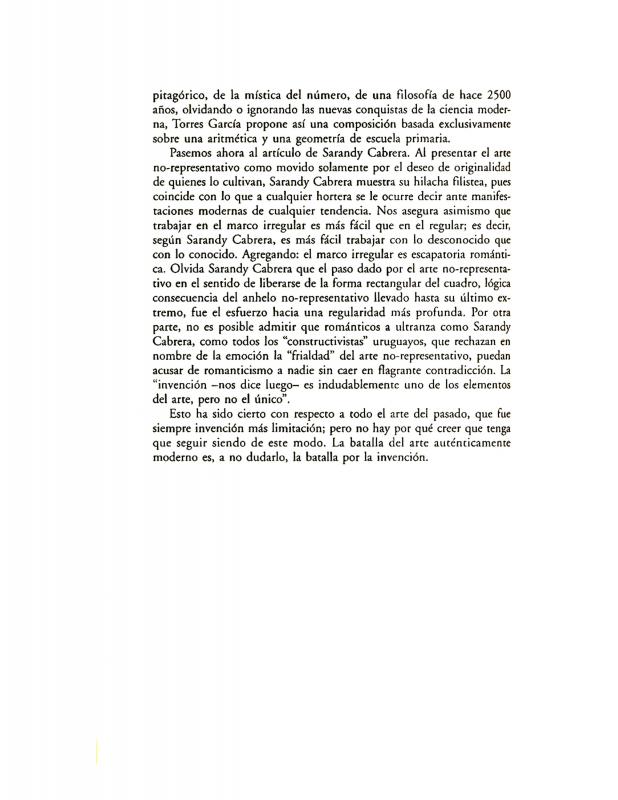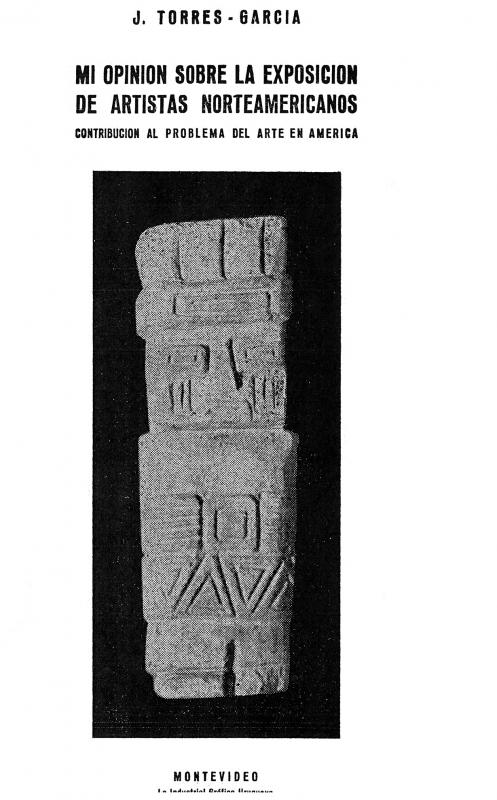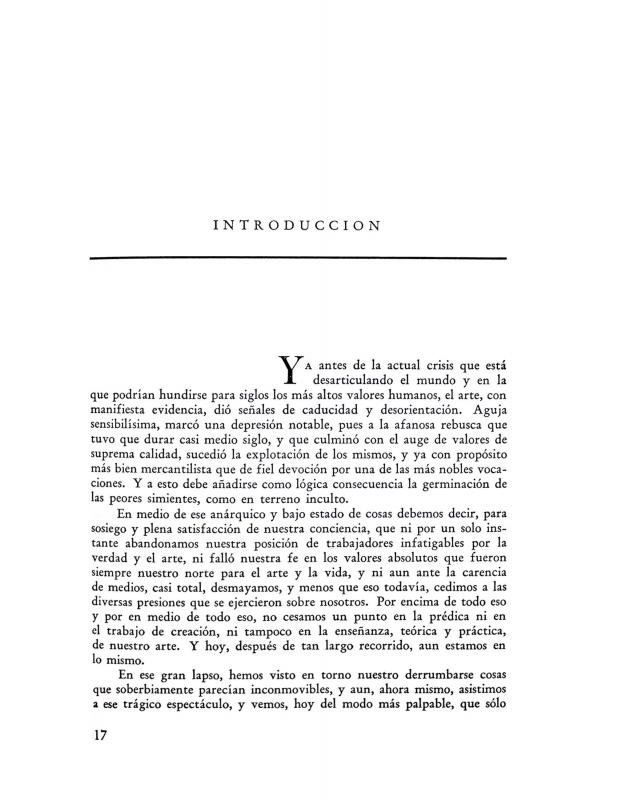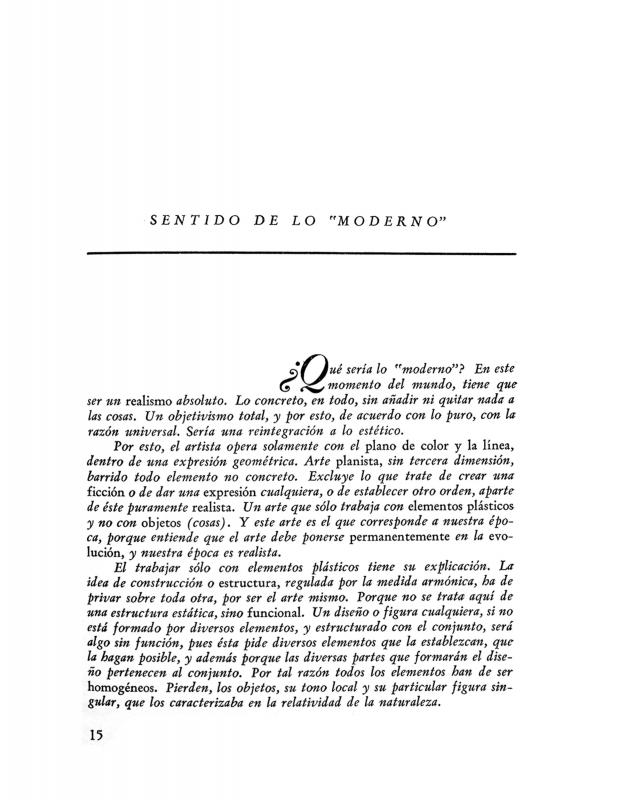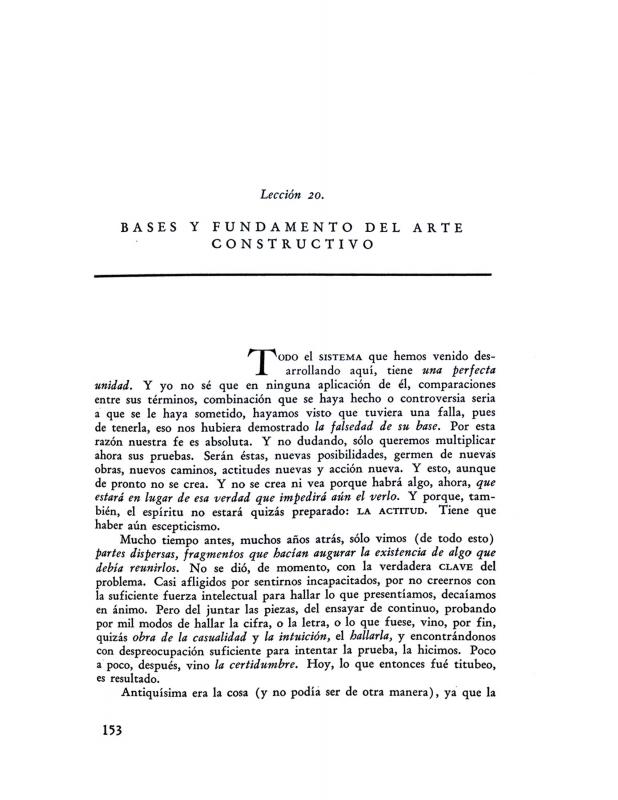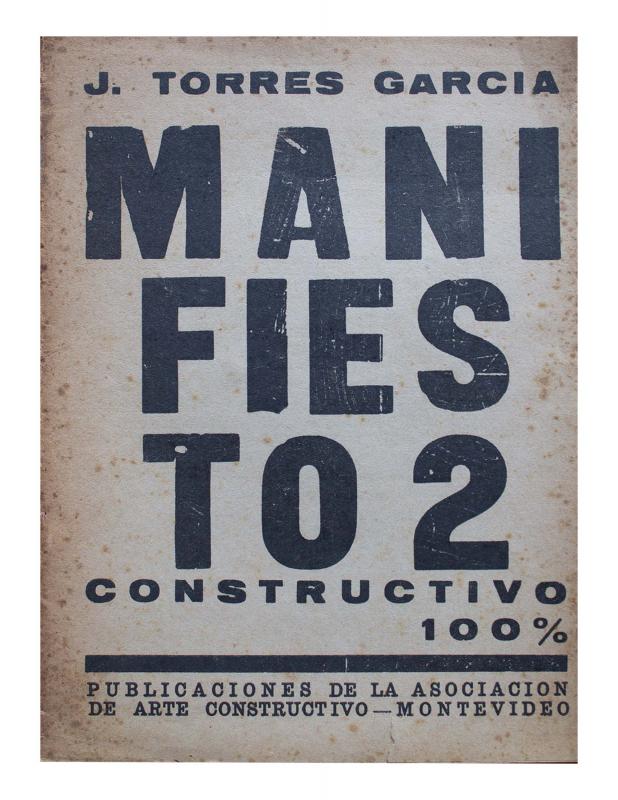In his article “Nuestro problema de arte en América” Joaquín Torres García speaks out on various different issues. He repeats his customary defense of abstraction, which he describes as a form of painting that is the opposite of an imitation of what is real (what is visible). And he once again makes a distinction between the concept of “international” that is used in the modern world and the concept of “universal” which, according to his doctrine, only dwells in the spirit of the Great Tradition, in the abstract nature of “the One.” He goes on to express his theory of the “American race,” which claims that the criollos [creoles] of Latin America are a civilization unto themselves because they are “biologically international.” “We are internationalists par excellence,” he states, underscoring the cosmopolitan nature of Latin American cultural elites. JTG’s question is therefore how to transform the scatterbrained diversity of the “biologically international” American criollo race into the mystical serenity of “spiritually universal” cosmic thought (that is, how to transform diversity into unity). The solution, he says, is to “put down roots” in the land where a new form of art is to be created, insisting that it is pointless to imitate the modern Europeans. He thus intends to study the Latin American people in order to create our own theories, to create our own way of thinking. As an example of new art—which in his opinion is not “modern art” but “universal art”—he mentions the murals his group has just painted at the Hospital Saint Bois de Montevideo (1944): “That, undoubtedly, is a place to start. Constructive rules, strong colors, the tone and the spirit of the present” that JTG believes is permanently linked, in doctrinaire terms, to the non-temporal “classical spirit.”
During the course of his remarks JTG refers ironically to the “invencionismo” [inventionism] of the concrete artists of the Río de la Plata region who gravitated to Arte Concreto — Invención shortly after the appearance of the magazine Arturo (1944) to which he had contributed. He caustically notes that “Some people who presume to ‘be cultured’ want another kind of game: intellectualism, poetry. And they enjoy any invention produced by some naïve theory or some pseudo poetic creation that is usually an imaginative vulgarity of some kind.” JTG could find no softer words to describe the distance he felt separated him from those who, in their Manifiesto, had taken a combative approach to art that bluntly confronted his principle: “A scientific aesthetic will replace the speculative and idealistic millennial aesthetic […]. Metaphysics […] has starved to death […]. There is nothing esoteric in art.” His tough contradiction of ideas prompted Tomás Maldonado, the Argentinean artist and theorist and founder of the Asociación Arte Concreto — Invención, to publish a harsh response to JTG’s article in the Association’s newsletter, Boletín N°2 (December 1946) under the title “Torres García contra el arte moderno” [see it in the ICAA digital archive (doc. no. 730028)].
[As complementary reading, see the following articles written by Joaquín Torres García: “Con respecto a una futura creación literaria” (doc. no. 730292); “Lección 132. El hombre americano y el arte de América” (doc. no. 832022); “Mi opinión sobre la exposición de artistas norteamericanos: contribución” (doc. no. 833512); “Nuestro problema de arte en América: lección VI del ciclo de conferencias dictado en la Facultad de Humanidades y Ciencias de Montevideo” (doc. no. 731106); “Introducción [en] Universalismo Constructivo” (doc. no. 1242032); “Sentido de lo moderno [en Universalismo Constructivo]” (doc. no. 1242015); “Bases y fundamentos del arte constructivo” (doc. no. 1242058); and “Manifiesto 2, Constructivo 100%” (doc. no. 1250878)].

